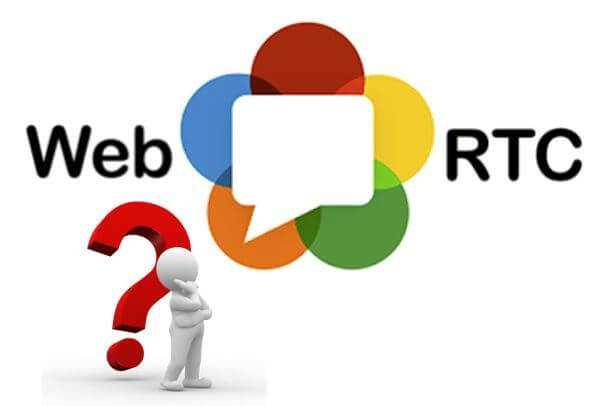#mc_embed_signup{background:#fff; clear:left; font:14px Helvetica,Arial,sans-serif; }
/* Add your own Mailchimp form style overrides in your site stylesheet or in this style block.
We recommend moving this block and the preceding CSS link to the HEAD of your HTML file. */
Despite its growing popularity and applications in technologies such as Google Hangouts and Mozilla’s Firefox Hello, not everyone is aware of WebRTC and its vast potential. WebRTC stands for Web Real-Time Communication, but this technology goes beyond simple emails and instant messages. This communication protocol allows users to make voice and video calls over the web with no need for downloads, plugins, or user accounts on dedicated platforms.
By setting up a secure connection in the browser directly between peers, WebRTC facilitates a mobile, global communications network that is opening up new opportunities for forward-thinking businesses. Here are five reasons your start-up should embrace WebRTC to improve business and communication processes.
1. Fast and Simple Deployment and Integration
Before the advent of WebRTC, businesses had three options for making video calls. Dedicated applications such as Skype, or cloud-based solutions such as GoToMeeting, offered the ability to make video calls. However, a lack of third-party integration and the need to maintain profiles means that users had to continually jump between accounts, platforms, and communications during sessions, damaging the user experience (UX).

The type of Unified Communications (UC) systems typically used by enterprises are expensive and can potentially take a specialist engineer months to integrate fully. WebRTC is accessed over the internet in the same way that any standard web content is. And with all communications functionality already embedded in the browser, WebRTC can be implemented in just a few hours using open source technology. Third-party applications easily integrate with just a few lines of code using dedicated documentation provided by the vendors.
2. Increased Security as Standard
Most people mistakenly believe that VoIP (Voice over Internet Protocol) calls, commonly used by UC systems, are secure. However, VoIP leverages an RTP (Real-time Transport Protocol) infrastructure to facilitate these calls. This RTP is selected for its ease of implementation and configuration at the expense of the security offered by the more complex SRTP (Secure RTP).
SRTP provides authentication and encryption for each transaction, maintaining the integrity of sensitive business communications at all times. WebRTC was built on a foundation of SRTP as its core, providing security and privacy of corporate video calls as standard.
3. Supporting a Mobile-First Strategy
The “mobile tipping point,” where more media was consumed on mobile devices than on desktops for the first time, arrived in 2014. With nearly 2 billion smartphones in use today, mobile is now the primary interface for accessing media. Taking a mobile-first approach ensures the most engaging customer experience through tailored workflows.
As an example, the inclusion of WebRTC click-to-call features embedded directly into your company’s app allows customers to contact you with voice or video calls without having to exit your platform. This one-stop environment enhances UX and builds confidence in your brand for delivering quality services. An added benefit to your start-up is the valuable data that can be extracted from mobile interactions, such as geo-location and usage patterns, that can be leveraged to deliver time-relevant targeted marketing.
4. Make Customer Interactions More Personal
According to a Global Web Index study, 80% of internet users own a smartphone. In addition, smartphone users spend more time online consuming far more content than desktop users, so it is important to provide inbound access from the place they spend the most time. Existing video-calling platforms such as Skype rely on standard cellular data networks, which can be flaky and have a tendency of dropping out during calls, building an emotional barrier between you and your customers.
This issue is easily overcome by leveraging a dedicated SDK (Software Development Kit) like the one offered by real-time communications provider Agora.IO for accessing their WebRTC-optimized virtual network architecture. The result is a clear and crisp connection for the duration of voice and video calls, even as devices switch between 3G, 4G, and WiFi signals as they move around. Agora’s solution offers a guaranteed quality of service that makes customer interactions more personal by allowing staff and customers to focus on the quality of the conversation, rather than the quality of the signal.
5. A Cost Effective Communication Solution
Skype and FaceTime provide an affordable service with a lack of consistent quality while dedicated UC systems require a substantial capital investment to purchase the hardware with lengthy implementation schedules.
Neither of these is a viable option for a professional start-up.
In contrast, core WebRTC technologies are free to use and accessible via webrtc.org as a low-cost communications solution. Even pre-packaged and optimized solutions by WebRTC infrastructure companies offer a more cost effective solution than UCs or maintaining 1800 numbers. Returning to the Agora example mentioned earlier, implementation can be completed in just a few hours using open-source technologies at little cost. Furthermore, the ongoing operating costs are reduced with the first 10,000 voice/video minutes per month provided for free, with a fee charged for packages of minutes after that.